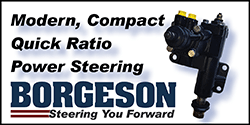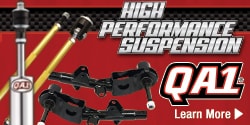Newbomb Turk
Well-Known Member
I agree with some of what you say but not all. It seems like one of the reasons you use as an argument against MVA is that it messes up the curve elsewhere in the rpm range. The examples you use to support this are in my opinion tuning it backwards. You're adding the MVA first. Why not tune the curve the way you think is the best mechanical then add and tune the MVA last if the motor wants it.
My opinion is that MVA would be better named as "vacuum advance at idle". It's less confusing. Ported vacuum is the same thing as MVA minus the vacuum at idle. Why even have vacuum advance? Why not just have mechanical advance? (By the way I think mechanical or centrifugal advance should be renamed rpm based timing or rpm timing for short.) To start with you don't need mechanical or vac advance. You can lock your distributor down and set it to a best compromised number and call it good. In some applications this is useful. Because motors will run better with less or more timing at different rpms adding mechanical advance is helpful. Engines also want different timing under different loads. Using vacuum as an indicator of load on the engine allows us to change the timing curve based on load. And we have two options for vacuum, manifold or ported. Of course now we have electronic timing control. Some would argue that is the best.
If you add MVA (again if the motor wants it) last then the "right mechanical curve" will still be the "right mechanical curve above idle." So if a timing problem occurs after adding the MVA it is a problem with vacuum advance curve. Which can be tuned in most cases for starting point and total vac advance added with different, modified or adjustable vacuum advance mechanisms.
I don't completely agree that if you can benefit from MVA or vac advance at idle that your motor is built wrong. How you build your motor depends on a lot of things including your application. There is vast range of possibilities for different combinations and it is likely that some will benefit from MVA.
The problem you expose with the time delay of the drop out of the vac advance may or may not be a problem. I could be more of a problem with a sticky mechanism or stiff diaphram. But again in my opinion it's not certain to be a problem in every case so why not try it first. Also if it is a problem it is likely to also be a problem for ported vacuum.
Probably the biggest problem again IMHO is having the time, patience and understanding to develop the best timing curve for your application. It can be a real time suck and you will be tempted to say at some point "good enough " or "I give up" or "I need someone else to do this"all legitimate responses. But if your committed and can develop the proper mechanical curve you can probably handle the vac curve. This process may involve comprises.
All that said I have the timing locked on one of my street cars and on my racecar. It's Fast ignition, doesn't retard with rpm like others and has a built in start retard. Is it ideal for the street car? Maybe not but I'm satisfied. For now.
I was going to respond to was paragraph but it’s way too hard to do from my phone. I can’t do it on my laptop because my mom had some chickencrap internet from Verizon that if it was Amish speed it would have been faster.
Verizon got fired from everything and it will be Wednesday before I get real internet here.
So I’ll do the best I can and hopefully not go so long. Way too many long posts for me lately.
Ok, I’m sure we agree we both have a pretty good handle on how much total timing say a sbm will need IF it’s not some weird deal like mine.
We also need to agree that engines want LESS timing at peak torque and MORE timing at peak power. That’s just how it is and I can prove that on the dyno and in the car but it’s way easier on the pump.
I can’t recall the peak torque and power rpm for a 1968-1971 340 but I think peak power was at 5500. Peak torque is usually 1500-2000 rpm less than peak power.
In cases like that you can run a very soft curve, make decent power, acceptable economy and drive nice.
A good tuner can change the curve from OE and pick up power everywhere. It gets tricky when we use long duration, high overlap cam timing, headers and other aftermarket stuff.
Compression and cam timing are directly related and that correlates directly to effective compression ratio.
I use and call it effective compression ratio and not dynamic because it’s not dynamic at all.
Effective compression ratio is the compression ratio calculated using the actual stroke length and effective compression ratio is calculated from the length of the stroke MINUS the length of stroke from BDC to IVC. That never changes and it has nothing to do with dynamics or anything else.
Effective compression ratio is what the engine “sees” while running.
Damn, right down the rabbit hole. Anyway, you can be 12:1 static compression ratio (SCR) and have an effective compression ratio (ECR) of 8:1 if you get the cam timing to do it.
It would be an understatement to say the ECR dictates the timing curve almost as much as combustion chamber shape (including the geometry of the piston top), rod to stroke ratio (yes, it affects ignition and cam timing) and spark plug location. Maybe more so than the last two.
I need to take a break. I’ll pick this up in a bit.

















